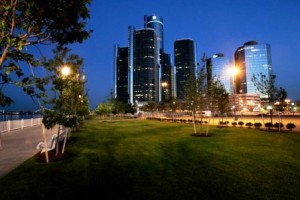
GM is appealing the ruling of a three judge panel on the court of appeals that exposes it to millions of dollars in new liabilities.
Lawyers for General Motors are gambling they can persuade the full panel of judges from the U.S. Second Circuit Court of Appeals to reverse an opinion by one the court’s three judge panels in the ongoing battle surrounding its faulty ignition switches.
The panel recently ruled against the company, leaving it potentially facing millions in dollars in additional liabilities in the lengthy legal fight over the defective ignition switch in GM vehicles linked to more than 120 deaths.
The original ruling, which was made public in July, represented a significant setback for GM in the long-running litigation since it reversed part of a bankruptcy court decision that protected the automaker from some lawsuits over the defect that prompted the recall of 2.6 million vehicles in 2014.
If the decision stands, GM is potentially liable for millions of dollars of additional claims from some owners of the vehicles built prior to GM’s 2009 bankruptcy.
“The Second Circuit’s ruling neither addresses nor decides the merits of any claims. Many of the claims we face have been brought on behalf of car owners who want to be compensated even though they have not suffered any loss,” GM said in statement.
GM’s petition for a rehearing states that the ruling set aside well-established rules, covering bankruptcy cases.
(GM’s legal problems continue to grow. For more, Click Here.)
It can ask for a rehearing in which the all the judges of the U.S. Second Circuit Court of Appeals are given a chance to vote on the merits of the claim or it can appeal directly to the U.S. Supreme Court, which is increasingly selective about the cases it considers. If the Supreme Court elects not to take the case, the ruling of the Second Circuit stands and is virtually impossible for GM lawyers to change, which would force the automaker to consider an expensive settlement.
The lawyers for the plaintiffs in the ignition switch case described ruling is a major victory for a class of millions of owners of GM-branded vehicles, who have claimed that the automaker’s misconduct has damaged the value of the vehicles targeted for recall because of the faulty ignition.
The court specifically ruled that so-called “independent claims” relating to “New” GM’s own post-bankruptcy wrongful conduct, including claims involving misrepresentations by New GM as to the safety of “Old” GM cars, are not barred by the bankruptcy order discharging other claims in the case, according to a press release from Hagens Berman Sobol Shapiro LLP, one of the firms representing the disgruntled consumers.
(Appeals court deals GM major setback in ignition case. For more, Click Here.)
“The court also ruled that the bankruptcy order did not bar economic loss claims based on the ignition switch and other defects, finding that Old GM knew about moving stalls and airbag non-deployments resulting from the ignition switch defect and should have revealed those facts in bankruptcy and provided notice of those claims to affected vehicle owners,” the release said.
“The appeals court’s ruling today solidifies something that we have known from the very beginning of this suit — GM’s bankruptcy filing was a calculated move in its effort to conceal and cover up its actions,” said Steve Berman, managing partner of Hagens Berman and co-lead counsel representing GM vehicle owners in the suit.
“We are pleased with the court’s decision and recognition that claims brought by millions of GM owners are not subject to GM’s bankruptcy protection and can move forward.”
(“New” GM scores a minor victory in court. Click Here for the story.)
One of the safety defects involves the car’s ignition, which according to consumers, can switch off while the car is in operation, disabling airbags and other electrical and safety features such as power steering and power brakes. According to published reports and government documents, GM had knowledge of the serious defect as early as 2001.
